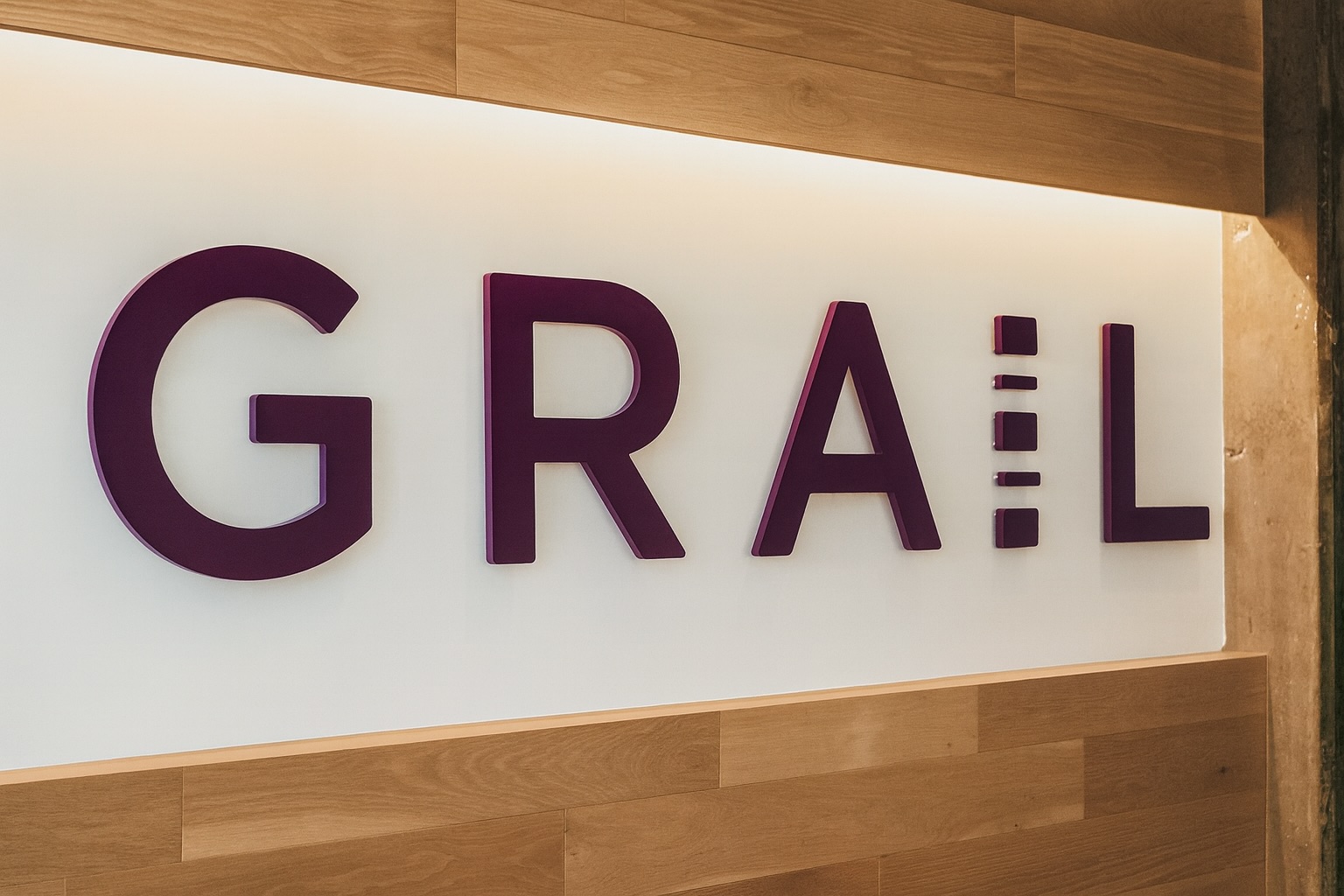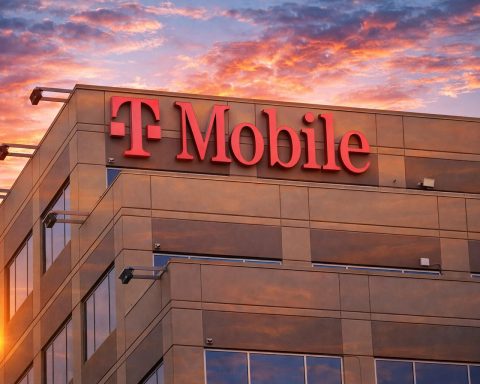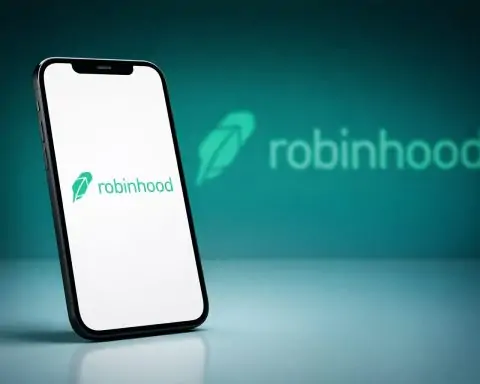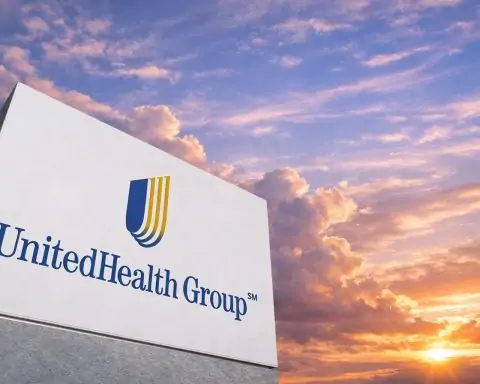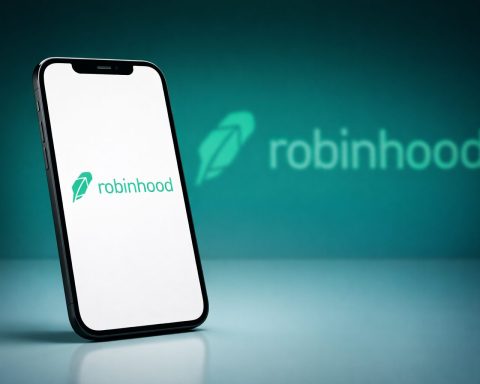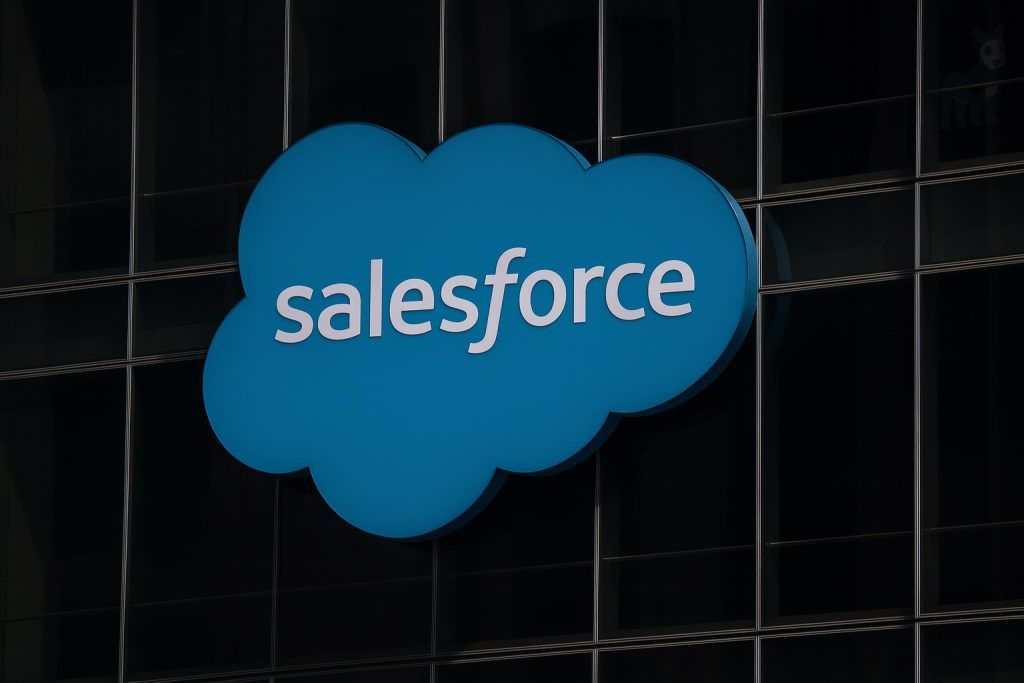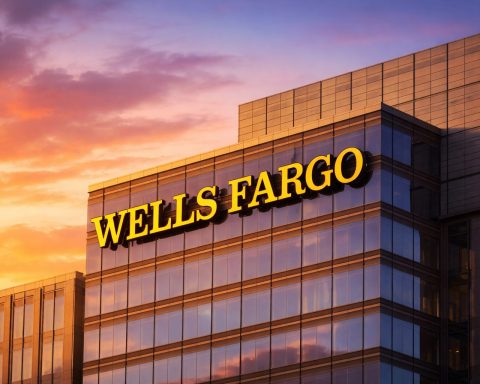- Shares near all-time high: GRAIL, Inc. (NASDAQ: GRAL) surged ~14% after announcing a partnership with Samsung, hitting a record ~$85.35 on Oct. 16 [1]. The stock is up roughly 300% year-to-date, making it one of 2025’s top biotech performers. As of Oct. 20, GRAL trades around the mid-$80s after another jump on fresh trial data and funding news [2].
- Samsung’s $110M bet: Samsung C&T and Samsung Electronics agreed to invest $110 million in GRAIL at $70.05/share to roll out GRAIL’s Galleri cancer test in South Korea, with plans to expand to Japan and Singapore [3] [4]. The Oct. 16 announcement sent GRAIL stock up 13–14% in one day, adding about $300 million in market value despite a down day for broader markets [5]. “This provides Samsung a strong foothold in the cancer screening field,” said Jaywoo Kim, EVP of Samsung C&T, calling Galleri’s technology highly promising [6].
- Cancer screening breakthrough: GRAIL unveiled new clinical trial results at a major oncology conference (ESMO 2025) showing that adding its Galleri blood test to routine screenings dramatically increased early cancer detection. In a 25,000-patient study (PATHFINDER 2), Galleri detected several times more cancers – over a seven-fold increase – when combined with standard screenings, while maintaining an extremely low false-positive rate (~0.5%) [7]. A UK study (SYMPLIFY) in symptomatic patients likewise reported that about one-third of initial “false alarms” were later confirmed as cancer, improving Galleri’s positive predictive value to ~84% [8].
- Fresh funding extends cash runway: On Oct. 20, GRAIL announced a $325 million private placement from institutional investors including Deep Track Capital, Farallon, Hims & Hers Health, and others [9]. The new capital – alongside existing cash and the pending Samsung infusion – will fund operations into 2030 [10]. GRAIL’s last reported quarter (Q2 2025) showed $35.5 million in revenue (+11% YoY) but a net loss of $114 million [11]. The company has been burning cash to grow, so the funding eases immediate concerns about liquidity.
- Analyst sentiment mixed: Despite GRAIL’s rally and high hopes for its “holy grail” cancer test, Wall Street is cautious. The consensus rating is Hold [12] and the average 12-month price target is only ~$57 [13] – well below the current stock price. Some bulls have raised targets (e.g. Canaccord Genuity hiked its target from $43 to $75 after the Samsung deal [14]), but many analysts warn that recent “hype” may be ahead of fundamentals [15]. GRAIL still faces key risks: no FDA approval yet (approval hoped by 2026), the need to convince insurers to cover Galleri, and looming competition from other cancer-test developers [16].
Samsung Alliance Triggers Record Rally
GRAIL’s stock price exploded after the company announced a strategic alliance with Samsung on October 16. Under the deal, Samsung C&T will invest $110 million in GRAIL and become the exclusive distributor of the Galleri multi-cancer blood test in South Korea, with rights to expand into Japan and Singapore [17]. Samsung Electronics is also participating and plans to explore AI and health-data collaborations with GRAIL [18]. This marks a major vote of confidence from one of Asia’s largest conglomerates. The partnership is expected to close by early 2026 (pending conditions) and gives GRAIL a powerful commercialization partner in key Asian markets [19].
Investors cheered the news. GRAL shares jumped ~13–14% on Oct. 16, touching an intraday record of about $85–$86 [20]. Reuters reported the stock hit $85.35, a new high, on that announcement [21]. This one-day pop added roughly $300 million to GRAIL’s market capitalization [22]. Notably, the surge came on a day when broader stock indices and biotech peers were down, underscoring how company-specific the excitement was. The rally also continued a multi-day uptrend fueled by rumors of the Samsung deal leading up to the official confirmation [23].
Samsung’s endorsement is seen as a validation of GRAIL’s technology. “This provides Samsung with a strong foothold for expanding into the cancer screening field,” said Jaywoo Kim, executive VP at Samsung C&T, in a statement about the alliance [24]. Samsung will help roll out Galleri in Asia, which could significantly expand GRAIL’s reach. GRAIL’s President of International, Sir Harpal Kumar, added that Samsung’s “significant equity investment strengthens our balance sheet and provides further cash runway”, helping the company pursue regulatory approvals and reimbursement goals [25]. In short, Samsung’s backing not only brings funding but also lends commercial muscle in new markets, a combination that sent investor optimism soaring.
Cancer Test Results Fuel Optimism
The Samsung deal wasn’t the only catalyst lifting GRAIL. The company also reported encouraging new clinical results for its flagship blood test, Galleri, which aims to detect dozens of cancers at an early stage from a single draw of blood. At the European Society for Medical Oncology (ESMO) conference (Oct. 17–21, 2025), GRAIL unveiled top-line findings from its PATHFINDER 2 trial, a 25,000-patient study of Galleri in adults over 50 [26]. The results suggest Galleri can dramatically improve cancer detection when added to routine screening.
According to GRAIL, adding the Galleri test “increased the number of cancers detected more than seven-fold” compared to standard screening alone, while maintaining a very low false-positive rate [27]. In practical terms, Galleri caught many cancers that traditional screenings (like mammograms, colonoscopies, etc.) would miss, without generating many false alarms. The test demonstrated about 99.5% specificity, meaning only ~0.5% false positives [28] [29]. “Galleri’s ability to detect over 50 cancer types by scanning for tumor DNA in blood makes it a potential game-changer – a ‘holy grail’ of early detection,” as one report noted [30] [31]. Investors and health experts alike have been impressed by the data, viewing it as evidence that multi-cancer blood screening can work in practice.
GRAIL is also highlighting new data from a UK study called SYMPLIFY, focused on patients who already have symptoms. In updated long-term results presented this week, researchers found that 35% of patients initially thought to have false-positive Galleri results were later diagnosed with cancer within 2 years [32]. This follow-up effectively turned some “false alarms” into true positives over time, raising the test’s positive predictive value (the chance that a “cancer signal detected” truly meant cancer) to 84.2% [33]. The SYMPLIFY findings reinforce that Galleri can reliably identify cancer signals – even among patients with symptoms – with most of those signals eventually confirmed by diagnosis.
These clinical results are significant for GRAIL’s future. The company plans to submit the PATHFINDER 2 data to the U.S. FDA as part of its premarket approval application for Galleri [34]. GRAIL hopes to secure FDA approval by 2026, which would make Galleri the first multi-cancer early detection test cleared for widespread use in asymptomatic people. Achieving strong trial outcomes is a critical step toward that goal. The new evidence could also help persuade medical guideline bodies and insurers to embrace multi-cancer screening. However, even with excellent data, regulatory and adoption hurdles remain – it typically takes time for regulators and health insurers to evaluate novel tests, and doctors will need education on how to use Galleri results in practice.
$325 M in New Funding – Cash Runway to 2030
GRAIL’s rapid stock ascent and ambitious R&D efforts come with a price tag: the company is still losing money as it scales up. In Q2 2025, GRAIL reported $35.5 million in revenue (from Galleri test sales) – a solid 11% increase year-on-year – but it posted a net loss of $114 million for that quarter [35]. Developing and marketing a groundbreaking diagnostic test is expensive, and GRAIL has been using its cash reserves to fund operations and large studies. By mid-2025 the company had about $600 million in cash on hand [36], enough to fund its activities into 2028 at the then-current burn rate.
To bolster its finances, GRAIL just secured a major cash infusion. On October 20, the company announced a $325.0 million private placement financing with a group of institutional backers [37]. Participants include several prominent healthcare-focused investors such as Deep Track Capital, Farallon Capital, Braidwell LP, and even Hims & Hers Health (a telehealth company diversifying into oncology) [38]. GRAIL will issue about 4.64 million new shares at $70.05 each (roughly a 10% discount to last week’s market price) as part of this deal [39] [40]. The funding is expected to close by Oct. 21, 2025, and will raise gross proceeds of $325 million for the company [41] [42].
The immediate impact is that GRAIL’s balance sheet gets a lot stronger. Management says the net proceeds, combined with existing cash, will fund GRAIL’s planned operations through 2030 [43]. And that doesn’t even include the additional $110 million investment from Samsung, which is pending closing [44]. In other words, if all goes as planned, GRAIL should have well over $800 million in total new capital between the Samsung deal and this private placement – giving it a long runway to execute its strategy. For a biotech company that’s still in the development stage, having that much cash is a significant advantage in navigating the next few years.
It’s worth noting that the new equity does dilute existing shareholders (increasing total shares outstanding by roughly 10%). However, the market’s reaction has been positive so far. News of the successful funding and strong trial data actually sent GRAIL’s stock up again on Oct. 20 – shares jumped about 13–14% in pre-market trading Monday on those announcements [45]. The ability to raise capital from reputable investors at only a modest discount was seen as validation of GRAIL’s prospects, and it alleviates fears that GRAIL might run out of cash before reaching profitability. With funding secured, the company can focus on growth: expanding Galleri’s commercialization, advancing its pipeline (new studies like REFLECTION, etc.), and clearing regulatory hurdles.
Experts Split on Valuation and Outlook
Even as GRAIL’s fundamental story improves, opinions on the stock’s valuation are divided. The stock’s near-vertical ascent in 2025 – up roughly four-fold – has made it a hot topic on Wall Street. On one hand, optimists argue that GRAIL’s technology addresses a massive unmet need (early cancer detection) and could transform preventative medicine. They point to GRAIL’s accelerating revenues and the deep-pocketed partners now on board. Some industry experts have even dubbed multi-cancer blood testing a “holy grail” of oncology prevention for its long-term potential [46]. If GRAIL can eventually make Galleri a routine screening test worldwide, the growth opportunity is enormous – and current prices could ultimately be justified by future earnings, bulls say.
On the other hand, skeptics caution that GRAIL’s stock may have run too far, too fast relative to its current fundamentals. Despite recent improvements, the company is still in the red and only a tiny fraction of eligible patients have taken the Galleri test so far [47]. “Analysts warn the stock hype may have outpaced reality,” one analysis noted bluntly [48]. Key challenges remain: GRAIL must convince insurers to cover the costly test for broader populations, navigate regulatory approvals, and fend off competition. Competitors like Guardant Health are developing similar multi-cancer screening assays, and even genomics giant Illumina (which originally founded GRAIL) looms in the background [49]. If Galleri adoption stalls or trial results disappoint in any way, GRAIL’s lofty valuation could quickly pull back.
Wall Street’s current consensus reflects this cautious stance. According to MarketBeat, analysts on average rate GRAL a “Hold” [50]. Among five analysts tracked, there is only 1 Buy recommendation, 3 Holds, and 1 Sell, and the average 12-month price target is about $56–$57 per share [51]. That implies analysts see the stock falling roughly 25–30% from its recent $80+ range. In fact, several investment researchers have openly questioned whether GRAIL’s nearly $3 billion market cap is justified for a company at GRAIL’s stage [52]. Heavy cash burn and the long road to profitability are cited as concerns [53].
That said, the recent Samsung deal and trial wins have started to sway some opinions. A few analysts have turned more bullish in light of GRAIL’s momentum. For example, Canaccord Genuity raised its price target from $43 to $75 (and reiterated a Buy rating) on October 16, citing increased confidence in GRAIL’s platform and the boost from Samsung’s partnership [54]. Investment outlets like Simply Wall St and Seeking Alpha have noted GRAIL’s strong revenue growth and suggest the company represents a high-risk, high-reward opportunity in biotech [55]. Overall, however, most analysts are advising investors to remain cautious until GRAIL proves itself further. “The gap between analysts’ targets (mostly $30–$60) and the current share price highlights the risk,” TechStock² observed, adding that any stumble in execution could lead to a sharp correction [56].
Broader Context and What’s Next
GRAIL’s recent surge comes at a time when the broader biotech sector has been mixed. Many biotechnology stocks have struggled in 2025 due to rising interest rates and investor risk aversion, but companies with truly breakthrough science have bucked the trend. GRAIL falls into the latter category – its mission of detecting cancer early (when it’s most curable) has captured the imagination of both investors and the public. The company’s multi-cancer test addresses a vast potential market; in the U.S. alone, tens of millions of older adults undergo routine screenings, and Galleri could eventually be added to that toolkit if approved. This narrative of a potential paradigm shift in cancer screening has undoubtedly contributed to GRAIL’s stock enthusiasm.
Looking ahead, several milestones and risks will determine GRAL’s trajectory. In the short term, news flow will be critical. Any updates from the FDA on Galleri’s review, or signals from insurance companies about coverage decisions, could move the stock significantly [57]. GRAIL’s management is presenting detailed PATHFINDER 2 data and engaging with regulators and payers – their commentary in coming weeks (for example, in an investor call or at conferences) will be closely watched. Volatility is likely to remain high; after such a steep climb, traders may take profits or react sharply to even minor news. Some market commentators expect the stock to trade choppily in the $70s to $80s range near term, as investors digest the recent developments and await the next catalyst.
In the mid-term (next 6–18 months), the key question is how quickly GRAIL can transition from proving its test to monetizing it. By mid-2026, the company hopes to have FDA approval in hand [58]. Approval would be a major de-risking event and could open the door to inclusion in guidelines and Medicare reimbursement – factors that would greatly expand Galleri’s adoption. Successful approval could also spur partnership interest in other regions (Samsung’s deal covers parts of Asia; Europe could be another frontier). If things go well, some analysts believe GRAIL’s revenue could ramp up sharply in a few years, potentially justifying the optimism baked into the stock. Bulls even speculate GRAL could continue hitting new highs if milestones are met.
However, if there are setbacks, the stock could retrace more of its gains. For instance, any regulatory delays, safety concerns, or slower-than-expected uptake (for example, if insurers decide not to pay for Galleri for average-risk patients initially) would likely weigh heavily on shares. GRAIL’s management has acknowledged that building a new testing paradigm is a long game – it will require accumulating more clinical evidence and convincing the medical community. Competition is another wild card: rivals are racing to develop their own multi-cancer blood tests, and GRAIL will need to maintain a technological edge. The company’s former parent, Illumina, is still involved in cancer genomics and could pose competitive pressure or even attempt to re-enter the space once GRAIL proves the market.
For now, GRAIL, Inc. has delivered a compelling one-two punch of a big-name partnership and breakthrough clinical data, propelling its stock to heights few could have predicted a year ago. The broader biotech market may be cautious, but GRAIL’s story shows how a high-impact scientific breakthrough can ignite investor excitement. The coming months will reveal whether GRAIL can build on this momentum. If Galleri continues to clear hurdles, some see the company on track to become a leader in a new era of preventative oncology – but if real-world challenges mount, GRAIL’s stock could come back to earth. Investors and analysts alike will be watching the next steps closely as GRAIL strives to turn its early promise into long-term success [59].
Sources: Key information sourced from TechStock²/TS2.tech analysis [60] [61] [62], official company releases [63] [64], and news reports by Reuters and Investing.com [65] [66], among others. All facts and quotes are linked to their original sources for reference.
References
1. www.tradingview.com, 2. m.investing.com, 3. ts2.tech, 4. ts2.tech, 5. ts2.tech, 6. ts2.tech, 7. www.prnewswire.com, 8. m.investing.com, 9. m.investing.com, 10. m.investing.com, 11. ts2.tech, 12. ts2.tech, 13. ts2.tech, 14. ts2.tech, 15. ts2.tech, 16. ts2.tech, 17. ts2.tech, 18. ts2.tech, 19. www.tradingview.com, 20. ts2.tech, 21. www.tradingview.com, 22. ts2.tech, 23. ts2.tech, 24. ts2.tech, 25. ts2.tech, 26. ts2.tech, 27. www.prnewswire.com, 28. www.prnewswire.com, 29. www.prnewswire.com, 30. ts2.tech, 31. ts2.tech, 32. m.investing.com, 33. m.investing.com, 34. www.prnewswire.com, 35. ts2.tech, 36. ts2.tech, 37. m.investing.com, 38. m.investing.com, 39. www.prnewswire.com, 40. www.nasdaq.com, 41. www.prnewswire.com, 42. www.prnewswire.com, 43. m.investing.com, 44. www.prnewswire.com, 45. m.investing.com, 46. ts2.tech, 47. ts2.tech, 48. ts2.tech, 49. ts2.tech, 50. ts2.tech, 51. ts2.tech, 52. ts2.tech, 53. ts2.tech, 54. ts2.tech, 55. ts2.tech, 56. ts2.tech, 57. ts2.tech, 58. www.prnewswire.com, 59. ts2.tech, 60. ts2.tech, 61. ts2.tech, 62. ts2.tech, 63. www.prnewswire.com, 64. www.prnewswire.com, 65. www.tradingview.com, 66. m.investing.com
